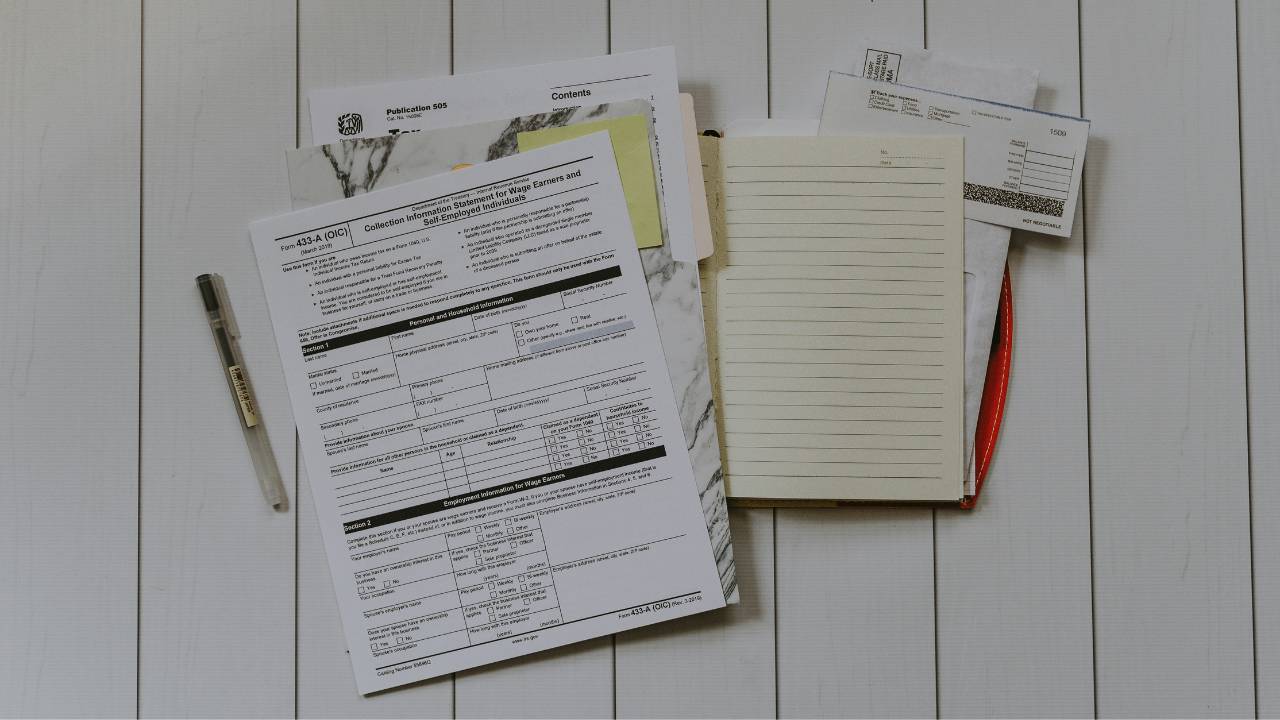
Entrepreneur Relief, also known as Business Asset Disposal Relief, is a significant tax relief available to business owners in the UK. When you sell or dispose of part or all of your business, this relief allows you to pay a reduced rate of Capital Gains Tax on profits (gains) that exceed the annual exempt amount. Generally, the rate is set at 10%, which is considerably lower than the standard Capital Gains Tax rates.
To be eligible for Entrepreneur Relief, there are specific criteria you must meet. Not only must you have been involved with the business for at least two years before the date of sale, but your business, whether it is a sole trade, partnership or part of a limited company, must also qualify as a trading business. Additionally, you must have owned at least 5% of the business and have the right to at least 5% of the profits.
It’s important to note that there’s a lifetime limit to the amount of gain that can benefit from this relief. Understanding the nuances of Entrepreneur Relief can help ensure that you take full advantage of the tax savings that may be available to you when you decide it’s time to move on from your business. Consulting a tax professional will provide tailored advice based on your particular circumstances.
Understanding Entrepreneur Relief
Entrepreneur Relief is a tax incentive aimed at business owners in the UK, allowing you to pay less Capital Gains Tax (CGT) when you sell or dispose of qualifying business assets. It’s designed to encourage individuals to start and develop their own businesses by offering a reduced tax rate on gains they’ve made from their enterprise.
Eligible Individuals:
- You, as an entrepreneur or business partner.
Qualifying Business Assets:
- Shares in a trading company or holding company of a trading group.
- Assets used by your business or a partnership business.
To be eligible for Entrepreneur Relief, these assets must have been owned by you for at least two years up to the date of disposal.
Relief Details:
- Gains on relevant business assets are charged at a rate of 10%.
- There is a lifetime limit on gains, which can impact the level of relief you receive.
Here’s a quick overview to see if you might qualify for Entrepreneur Relief:
| Eligibility Criteria | Description |
| Ownership Period | At least 24 months before the disposal. |
| Business Type | Must be a trading company or part of a trading group. |
| Participation | You must be an officer or employee of the company. |
| Minimum Shareholding | At least 5% of the ordinary share capital and voting rights. |
Remember, if you’ve sold or are planning to sell your business, or part of it, you could take advantage of this relief. It’s a valuable benefit, so be sure to consider whether your disposal qualifies for this advantageous tax treatment. Always verify current regulations, as tax laws can change, and seek professional advice if you’re unsure about your eligibility.
Eligibility Criteria for Entrepreneur Relief
When seeking entrepreneur relief, you need to meet specific operational and ownership conditions that reflect your involvement with the business and the assets in question.
Operational Requirements
To qualify for entrepreneur relief, your business activities must meet the necessary operational requirements. Firstly, the business must be a genuine trading company or part of a trading group. This indicates that your business should be actively engaged in buying and selling goods or services. If you’re a sole trader or a partner, the viability of your claim depends on your business’s trading status during the relevant period.
For those in a managerial or technical capacity, such as directors and managers, the company must prove substantive trading activities. As a company director or an employee, you must demonstrate that you have spent a significant amount of your time in a managerial or technical role that’s critical to the trade.
Ownership and Participation
The ownership aspect involves a holding period and a minimum stake in the company. You must have owned at least 5% of the ordinary shares and had voting rights in the company for a full year prior to the sale. This 5% holding should also give you entitlement to at least:
- 5% of the company’s distributable profits, and
- 5% of the assets available for distribution to equity holders in a winding up.
Your stake must be significant enough to show true participation in the success of the company, which aligns with the spirit of entrepreneur relief. As a business owner or partner, it’s critical that your holding company or firm considers your role as part of the decision-making process and recognises your contributions.
In terms of assets, only those considered qualifying assets, which are linked to your direct involvement in the business, count towards the relief. If you’re part of a group, individual stakes in subsidiaries are evaluated to ensure they align with the spirit of the relief.
For entrepreneurs who have sold or disposed of their shares or business, these criteria must have been met throughout a period of at least two years before the date of disposal. Remember, staying informed and ensuring you meet these eligibility criteria is crucial for your claim to entrepreneur relief.
Calculating and Claiming Relief

When seeking to claim Entrepreneur Relief, understanding how to perform a financial analysis that involves calculating the relief and integrating it into your tax situation can ensure you maximise your benefits. This section guides you through critical elements to get the most out of your claim.
Maximising Gain Threshold
Entrepreneur Relief allows for a lifetime limit of €1 million in gains from the disposal of qualifying business assets. You can benefit from a reduced Capital Gains Tax (CGT) rate of 10%, significantly lower than the standard rate. To maximise this relief, ensure your gains do not exceed this threshold over your lifetime to access the tax saving.
Disposals and CGT Rates
When disposing of business assets, the first €1 million of gains qualifies for the 10% CGT rate, which could result in substantial tax savings compared to the standard CGT rate of 33%. Any gain that exceeds this limit will be charged at the standard rate. You are required to calculate the chargeable gain and report this on your Form 11 tax return to the Revenue.
- Example Calculation:
- Gain from disposal: €1.2 million
- Chargeable gain at reduced rate (€1 million @ 10%): €100,000
- Chargeable gain at standard rate (€200,000 @ 33%): €66,000
- Total CGT: €166,000
Tax Planning Strategies
To optimise your tax position, consider pre-sale planning. Implementing tax planning strategies can help ensure tax-efficient disposals. This might include timing the sale to ensure it falls within the most beneficial tax year or spreading disposals to stay within the €1 million threshold, thus maximising tax relief. Careful financial modelling can lead to a significant tax saving and reduce your overall tax liability.
- Tax Planning Tips:
- Consider timing the sale of assets to coincide with low-income years.
- Split disposals across tax years if possible.
- Use family members’ allowances, if appropriate, to minimise CGT.
Exceptions and Exclusions

When exploring Entrepreneur Relief, it’s vital that you understand not all assets and businesses qualify. Below we’ll cover specific types of assets and company structures that do not fall under the relief.
Assets Not Covered
Certain assets you may hold as part of your business aren’t eligible for Entrepreneur Relief. These primarily include:
- Investments – Shares or securities held purely as investments do not qualify.
- Non-trading assets – If you own assets not actively used in the trade, such as development land, they’re excluded.
- Goodwill – Assets like goodwill can be complex, with qualifications varying based on intricate tax legislation criteria.
Property not used for business purposes is another classic example of a non-qualifying asset.
Ineligible Companies
In the realm of company structures, there are specific exclusions to note:
- Dormant Company – A business not engaging in significant trading activities, also known as a dormant company, is not eligible.
- Connected Company – Ownership in a connected company – where cross-ownership exists between entities – may complicate eligibility.
Businesses must be considered a trading company, meaning a significant portion of their activities must be in trade. Companies primarily dealing with non-qualifying assets or securities, sometimes referenced as bona fide investment companies, are likewise excluded.
Lastly, subsidiaries that do not pass the bona fide trading activity test can undermine the eligibility of the whole group for the relief.
Connection with Other Tax Reliefs
When exploring Entrepreneur Relief in the UK, you should also understand how it interacts with other tax reliefs, particularly how it may coincide with Retirement Relief and how it leverages benefits with other Capital Gains Tax (CGT) reliefs.
Overlap with Retirement Relief
Under certain circumstances, Entrepreneur Relief and Retirement Relief can have an overlap. Retirement Relief targets the retirement of business owners, allowing them to potentially avoid CGT on the sale of assets used in the business. Important points to note:
- Both reliefs apply to disposals of a business, often influencing the tax rate on your gains.
- Eligibility – To benefit from this overlap, you will need to meet specific criteria for each relief. For example, your age and the period of owning the assets can affect eligibility for Retirement Relief.
- Qualifying assets – These may include assets from a farm, partnership, or shares in a qualifying group.
- The interaction can be complex. If you’re considering liquidation or share buybacks, you should seek advice to optimise your tax position.
Interaction with Other CGT Reliefs
Entrepreneur Relief also interacts with various other CGT reliefs, each with its own set of rules. Highlighting some key interactions:
- Investment-related reliefs – If you have invested in a trading group or a double holding company structure, these investments can be eligible for Entrepreneur Relief under certain conditions.
- Company Liquidations – In a liquidation scenario, CGT reliefs should be considered carefully, especially if you’re eyeing Entrepreneur Relief post-liquidation.
- Overlap and timing – Some CGT reliefs can be used in conjunction with Entrepreneur Relief, but the timing of claims is essential to ensure the benefits are maximised.
When navigating these reliefs, your priority should be to understand how they complement or limit each other concerning your specific tax scenario.
Changes and Developments

In exploring the landscape of entrepreneur relief, it’s important to consider how historical amendments have shaped the current provisions, as well as keeping an eye on current trends.
Historical Amendments
Historically, entrepreneur relief has undergone a series of revisions to foster a more conducive environment for business owners. Revised entrepreneur relief has seen adjustments to the lifetime limit of the relief that business owners can claim. It’s crucial to note that changes also pertain to spouses and how their holdings may affect the relief available. For instance, past amendments have clarified positions on qualifying conditions for a trading company or holding company within a group structure.
Incorporation of a business has also been an area of keen interest in terms of entrepreneur relief. To secure this relief upon selling your business, the company must meet certain criteria which have been refined over the years. The adjustments ensure that PAYE compliance and the scale of business ownership are taken into account when defining a qualifying company.
Current Trends in Entrepreneur Relief
Looking ahead, current trends in entrepreneur relief suggest continuous evaluation to support genuine entrepreneurs. It’s important for you to keep updated via the revised entrepreneur relief manual, which outlines the latest guidance and application procedures. This resource is vital in understanding how you can plan and secure relief for your future business exits.
Recent dialogue has centred on simplifying the relief process while ensuring it’s not exploited. There’s an ongoing debate on whether further changes will be made to the rate or eligibility criteria to better serve the entrepreneurial community, including the treatment of disposals involving family members and the impact of multiple business interests.
Remember to always check for the latest updates as amendments can have significant implications for your eligibility to claim entrepreneur relief. Also, as a business owner seeking entrepreneur relief, consider discussing the matter with an enterprise management consultant – he or she will assist you in reaching your goal.
